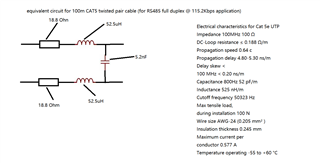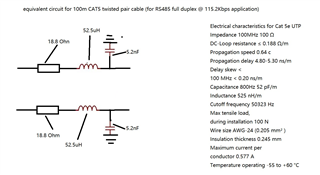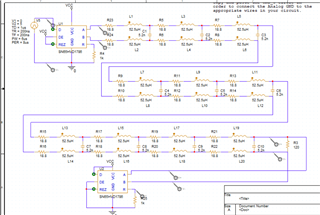Hi Team,
we are using THVD1520 for RS485 communication, the configuration is two twisted pair cable for full duplex RS485, distance is 1000 meters and baudrate is 115.2Kbps. we need make equivalent circuit to simulate the 1000 meter twisted pair cable, do you have such circuit? which wire size is appropriate for our application (18/22/24 AWG?), please advise, thanks a lot.
Best
Gu




